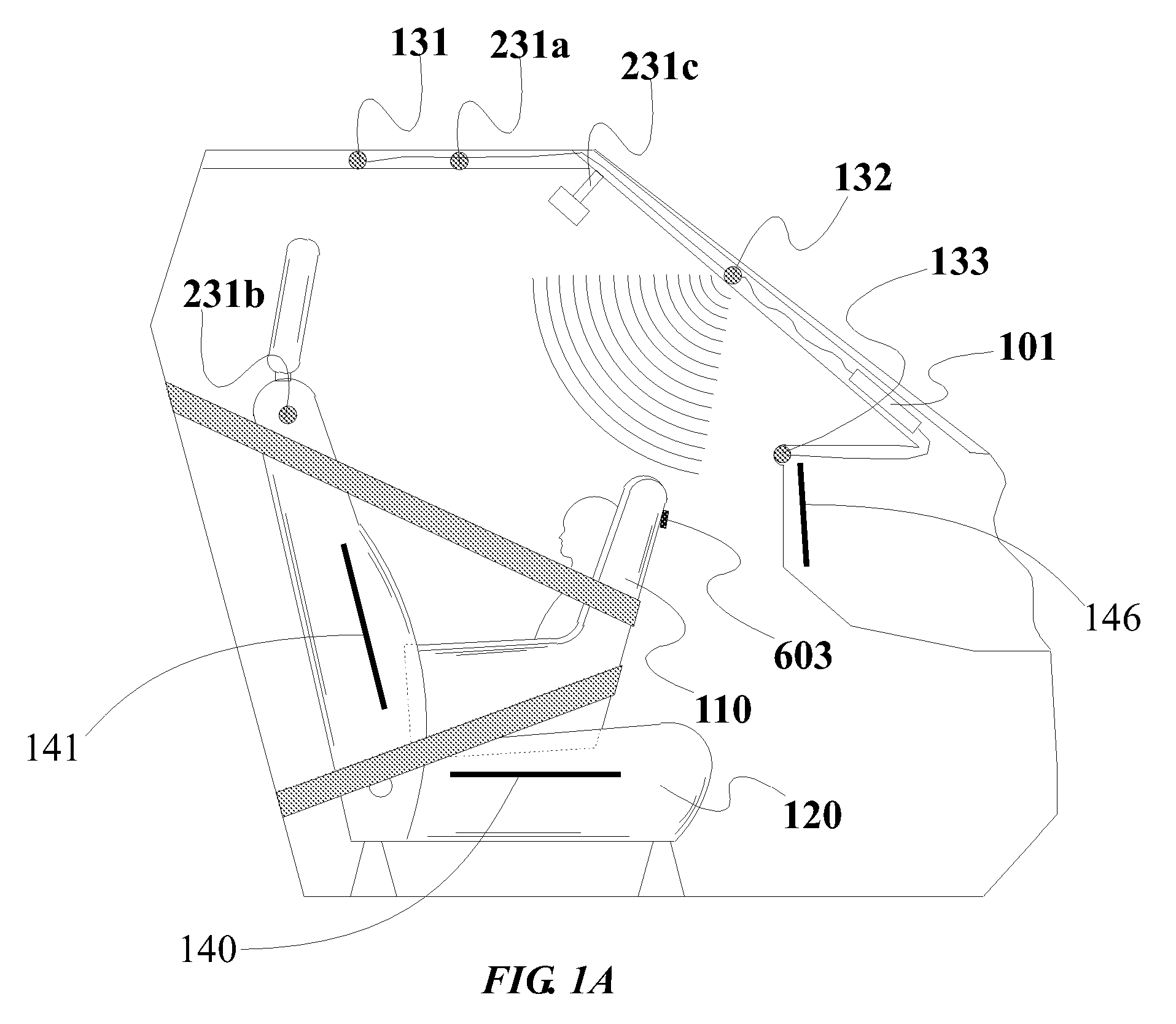Vehicular HVAC control systems and methods
a technology of hvac control and vehicle interior, applied in ventilation systems, lighting and heating apparatus, heating types, etc., can solve the problems of not being able to individually set climate conditions, lack of important sensors of vehicle interior and environment conditions,
- Summary
- Abstract
- Description
- Claims
- Application Information
AI Technical Summary
Benefits of technology
Problems solved by technology
Method used
Image
Examples
Embodiment Construction
1. Basic System
[0090]Referring to the accompanying drawings wherein the same reference numerals refer to the same or similar elements, FIG. 1 is a side view, with parts cutaway and removed of a vehicle showing the passenger compartment containing a rear facing child seat 110 on a front passenger seat 120 and a preferred mounting location for a first embodiment of a vehicle interior monitoring system in accordance with the invention. The interior monitoring system is capable of detecting the presence of an occupant and the rear facing child seat 110 (or more generally, a child seat and its orientation). In this embodiment, three transducers 131, 132 and 133 are used alone, or, alternately in combination with one or two antenna near field monitoring sensors or transducers, 140 and 141, although any number of wave-transmitting transducers or radiation-receiving receivers may be used. Such transducers or receivers may be of the type that emit or receive a continuous signal, a time varyi...
PUM
 Login to View More
Login to View More Abstract
Description
Claims
Application Information
 Login to View More
Login to View More - R&D
- Intellectual Property
- Life Sciences
- Materials
- Tech Scout
- Unparalleled Data Quality
- Higher Quality Content
- 60% Fewer Hallucinations
Browse by: Latest US Patents, China's latest patents, Technical Efficacy Thesaurus, Application Domain, Technology Topic, Popular Technical Reports.
© 2025 PatSnap. All rights reserved.Legal|Privacy policy|Modern Slavery Act Transparency Statement|Sitemap|About US| Contact US: help@patsnap.com



